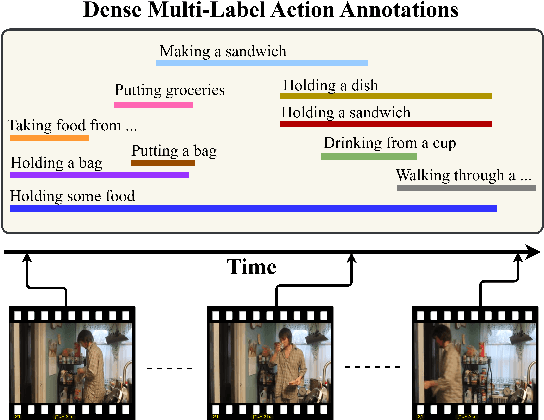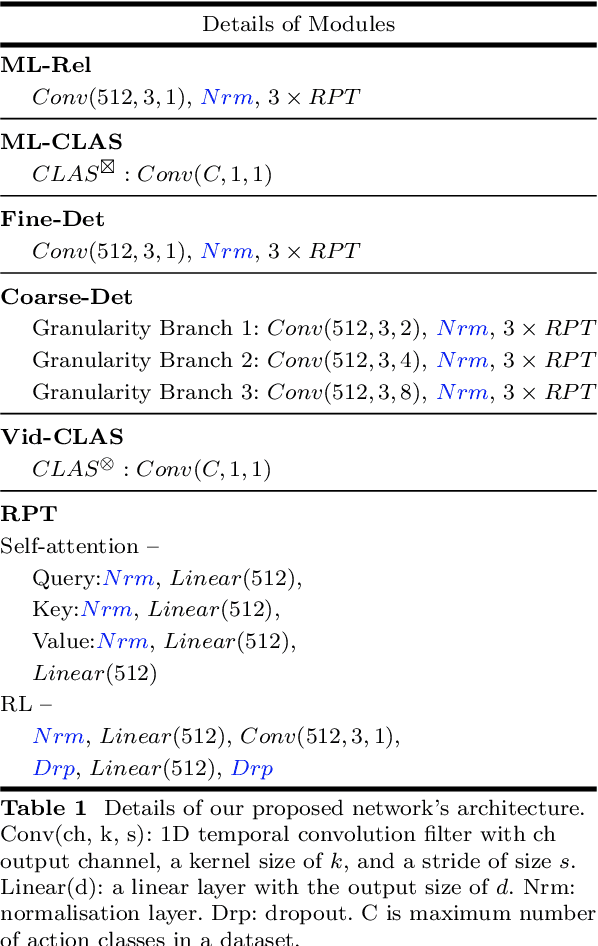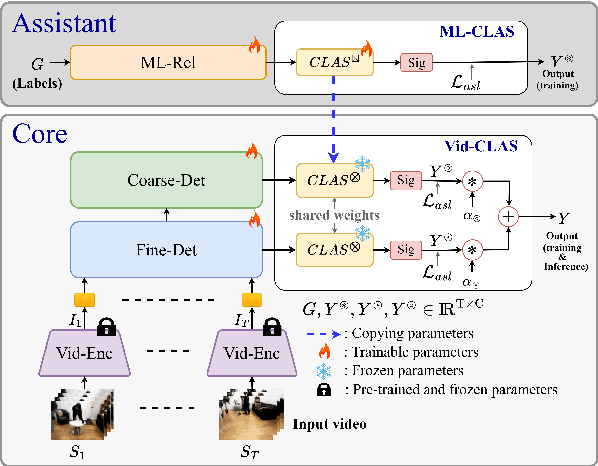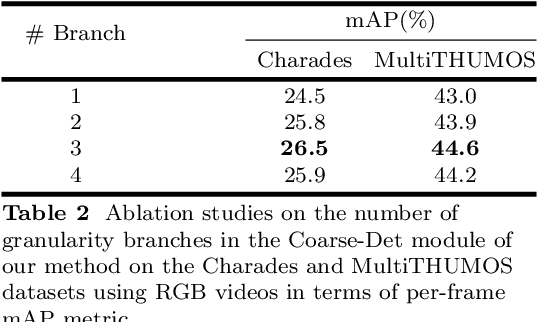Armin Mustafa
Joint Reconstruction of Spatially-Coherent and Realistic Clothed Humans and Objects from a Single Image
Feb 25, 2025Abstract:Recent advances in human shape learning have focused on achieving accurate human reconstruction from single-view images. However, in the real world, humans share space with other objects. Reconstructing images with humans and objects is challenging due to the occlusions and lack of 3D spatial awareness, which leads to depth ambiguity in the reconstruction. Existing methods in monocular human-object reconstruction fail to capture intricate details of clothed human bodies and object surfaces due to their template-based nature. In this paper, we jointly reconstruct clothed humans and objects in a spatially coherent manner from single-view images, while addressing human-object occlusions. A novel attention-based neural implicit model is proposed that leverages image pixel alignment to retrieve high-quality details, and incorporates semantic features extracted from the human-object pose to enable 3D spatial awareness. A generative diffusion model is used to handle human-object occlusions. For training and evaluation, we introduce a synthetic dataset with rendered scenes of inter-occluded 3D human scans and diverse objects. Extensive evaluation on both synthetic and real datasets demonstrates the superior quality of proposed human-object reconstructions over competitive methods.
Deconstruct Complexity (DeComplex): A Novel Perspective on Tackling Dense Action Detection
Jan 30, 2025Abstract:Dense action detection involves detecting multiple co-occurring actions in an untrimmed video while action classes are often ambiguous and represent overlapping concepts. To address this challenge task, we introduce a novel perspective inspired by how humans tackle complex tasks by breaking them into manageable sub-tasks. Instead of relying on a single network to address the entire problem, as in current approaches, we propose decomposing the problem into detecting key concepts present in action classes, specifically, detecting dense static concepts and detecting dense dynamic concepts, and assigning them to distinct, specialized networks. Furthermore, simultaneous actions in a video often exhibit interrelationships, and exploiting these relationships can improve performance. However, we argue that current networks fail to effectively learn these relationships due to their reliance on binary cross-entropy optimization, which treats each class independently. To address this limitation, we propose providing explicit supervision on co-occurring concepts during network optimization through a novel language-guided contrastive learning loss. Our extensive experiments demonstrate the superiority of our approach over state-of-the-art methods, achieving substantial relative improvements of 23.4% and 2.5% mAP on the challenging benchmark datasets, Charades and MultiTHUMOS.
Efficient Audio-Visual Fusion for Video Classification
Nov 08, 2024Abstract:We present Attend-Fusion, a novel and efficient approach for audio-visual fusion in video classification tasks. Our method addresses the challenge of exploiting both audio and visual modalities while maintaining a compact model architecture. Through extensive experiments on the YouTube-8M dataset, we demonstrate that our Attend-Fusion achieves competitive performance with significantly reduced model complexity compared to larger baseline models.
Boosting Camera Motion Control for Video Diffusion Transformers
Oct 14, 2024



Abstract:Recent advancements in diffusion models have significantly enhanced the quality of video generation. However, fine-grained control over camera pose remains a challenge. While U-Net-based models have shown promising results for camera control, transformer-based diffusion models (DiT)-the preferred architecture for large-scale video generation - suffer from severe degradation in camera motion accuracy. In this paper, we investigate the underlying causes of this issue and propose solutions tailored to DiT architectures. Our study reveals that camera control performance depends heavily on the choice of conditioning methods rather than camera pose representations that is commonly believed. To address the persistent motion degradation in DiT, we introduce Camera Motion Guidance (CMG), based on classifier-free guidance, which boosts camera control by over 400%. Additionally, we present a sparse camera control pipeline, significantly simplifying the process of specifying camera poses for long videos. Our method universally applies to both U-Net and DiT models, offering improved camera control for video generation tasks.
RenDetNet: Weakly-supervised Shadow Detection with Shadow Caster Verification
Aug 30, 2024Abstract:Existing shadow detection models struggle to differentiate dark image areas from shadows. In this paper, we tackle this issue by verifying that all detected shadows are real, i.e. they have paired shadow casters. We perform this step in a physically-accurate manner by differentiably re-rendering the scene and observing the changes stemming from carving out estimated shadow casters. Thanks to this approach, the RenDetNet proposed in this paper is the first learning-based shadow detection model whose supervisory signals can be computed in a self-supervised manner. The developed system compares favourably against recent models trained on our data. As part of this publication, we release our code on github.
Attend-Fusion: Efficient Audio-Visual Fusion for Video Classification
Aug 26, 2024



Abstract:Exploiting both audio and visual modalities for video classification is a challenging task, as the existing methods require large model architectures, leading to high computational complexity and resource requirements. Smaller architectures, on the other hand, struggle to achieve optimal performance. In this paper, we propose Attend-Fusion, an audio-visual (AV) fusion approach that introduces a compact model architecture specifically designed to capture intricate audio-visual relationships in video data. Through extensive experiments on the challenging YouTube-8M dataset, we demonstrate that Attend-Fusion achieves an F1 score of 75.64\% with only 72M parameters, which is comparable to the performance of larger baseline models such as Fully-Connected Late Fusion (75.96\% F1 score, 341M parameters). Attend-Fusion achieves similar performance to the larger baseline model while reducing the model size by nearly 80\%, highlighting its efficiency in terms of model complexity. Our work demonstrates that the Attend-Fusion model effectively combines audio and visual information for video classification, achieving competitive performance with significantly reduced model size. This approach opens new possibilities for deploying high-performance video understanding systems in resource-constrained environments across various applications.
Single-image coherent reconstruction of objects and humans
Aug 15, 2024Abstract:Existing methods for reconstructing objects and humans from a monocular image suffer from severe mesh collisions and performance limitations for interacting occluding objects. This paper introduces a method to obtain a globally consistent 3D reconstruction of interacting objects and people from a single image. Our contributions include: 1) an optimization framework, featuring a collision loss, tailored to handle human-object and human-human interactions, ensuring spatially coherent scene reconstruction; and 2) a novel technique to robustly estimate 6 degrees of freedom (DOF) poses, specifically for heavily occluded objects, exploiting image inpainting. Notably, our proposed method operates effectively on images from real-world scenarios, without necessitating scene or object-level 3D supervision. Extensive qualitative and quantitative evaluation against existing methods demonstrates a significant reduction in collisions in the final reconstructions of scenes with multiple interacting humans and objects and a more coherent scene reconstruction.
An Effective-Efficient Approach for Dense Multi-Label Action Detection
Jun 10, 2024



Abstract:Unlike the sparse label action detection task, where a single action occurs in each timestamp of a video, in a dense multi-label scenario, actions can overlap. To address this challenging task, it is necessary to simultaneously learn (i) temporal dependencies and (ii) co-occurrence action relationships. Recent approaches model temporal information by extracting multi-scale features through hierarchical transformer-based networks. However, the self-attention mechanism in transformers inherently loses temporal positional information. We argue that combining this with multiple sub-sampling processes in hierarchical designs can lead to further loss of positional information. Preserving this information is essential for accurate action detection. In this paper, we address this issue by proposing a novel transformer-based network that (a) employs a non-hierarchical structure when modelling different ranges of temporal dependencies and (b) embeds relative positional encoding in its transformer layers. Furthermore, to model co-occurrence action relationships, current methods explicitly embed class relations into the transformer network. However, these approaches are not computationally efficient, as the network needs to compute all possible pair action class relations. We also overcome this challenge by introducing a novel learning paradigm that allows the network to benefit from explicitly modelling temporal co-occurrence action dependencies without imposing their additional computational costs during inference. We evaluate the performance of our proposed approach on two challenging dense multi-label benchmark datasets and show that our method improves the current state-of-the-art results.
NarrativeBridge: Enhancing Video Captioning with Causal-Temporal Narrative
Jun 10, 2024Abstract:Existing video captioning benchmarks and models lack coherent representations of causal-temporal narrative, which is sequences of events linked through cause and effect, unfolding over time and driven by characters or agents. This lack of narrative restricts models' ability to generate text descriptions that capture the causal and temporal dynamics inherent in video content. To address this gap, we propose NarrativeBridge, an approach comprising of: (1) a novel Causal-Temporal Narrative (CTN) captions benchmark generated using a large language model and few-shot prompting, explicitly encoding cause-effect temporal relationships in video descriptions, evaluated automatically to ensure caption quality and relevance; and (2) a dedicated Cause-Effect Network (CEN) architecture with separate encoders for capturing cause and effect dynamics independently, enabling effective learning and generation of captions with causal-temporal narrative. Extensive experiments demonstrate that CEN is more accurate in articulating the causal and temporal aspects of video content than the second best model (GIT): 17.88 and 17.44 CIDEr on the MSVD and MSR-VTT datasets, respectively. The proposed framework understands and generates nuanced text descriptions with intricate causal-temporal narrative structures present in videos, addressing a critical limitation in video captioning. For project details, visit https://narrativebridge.github.io/.
CoLeaF: A Contrastive-Collaborative Learning Framework for Weakly Supervised Audio-Visual Video Parsing
May 17, 2024Abstract:Weakly supervised audio-visual video parsing (AVVP) methods aim to detect audible-only, visible-only, and audible-visible events using only video-level labels. Existing approaches tackle this by leveraging unimodal and cross-modal contexts. However, we argue that while cross-modal learning is beneficial for detecting audible-visible events, in the weakly supervised scenario, it negatively impacts unaligned audible or visible events by introducing irrelevant modality information. In this paper, we propose CoLeaF, a novel learning framework that optimizes the integration of cross-modal context in the embedding space such that the network explicitly learns to combine cross-modal information for audible-visible events while filtering them out for unaligned events. Additionally, as videos often involve complex class relationships, modelling them improves performance. However, this introduces extra computational costs into the network. Our framework is designed to leverage cross-class relationships during training without incurring additional computations at inference. Furthermore, we propose new metrics to better evaluate a method's capabilities in performing AVVP. Our extensive experiments demonstrate that CoLeaF significantly improves the state-of-the-art results by an average of 1.9% and 2.4% F-score on the LLP and UnAV-100 datasets, respectively.
 Add to Chrome
Add to Chrome Add to Firefox
Add to Firefox Add to Edge
Add to Edge